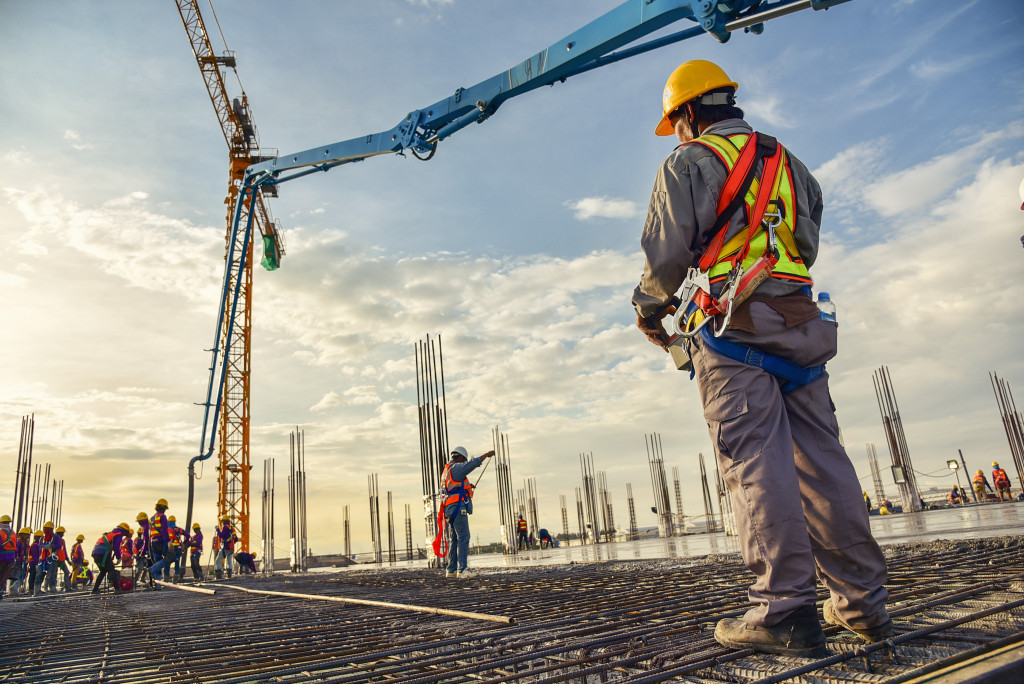- Regular equipment maintenance and proper lifting techniques are crucial to preventing construction site injuries.
- Adequate training and certification for workers involved in heavy lifting are essential for job site safety.
- Using appropriate lifting equipment like lifting blocks, hoists, winches, and web slings helps ensure safe heavy lifting.
- Prioritizing safety in heavy lifting operations can prevent accidents, keep workers healthy, and ensure timely project completion.
In the construction industry, heavy lifting is an essential component of most construction projects. Lifting and moving heavy loads safely is crucial to prevent injuries and fatalities on the job site. The importance of ensuring safety on construction sites often goes unnoticed by many business owners and entrepreneurs. But safety should never be neglected. This blog post will explore the best practices for heavy lifting to ensure the safety of your workers.
Identify Potential Hazards
Before starting any job, you need to ensure that the heavy equipment and lifting machinery are in good working condition. Any malfunctioning or damages should be reported immediately. All workers involved in the lifting process should be familiar with the equipment and safety measures. Here are potential hazards that you should check:
Poorly Maintained Equipment
Poorly maintained equipment is a significant risk factor in heavy lifting operations. If the heavy equipment is not regularly inspected and maintained, it can lead to mechanical failures, causing severe injuries or even fatalities on the job site. It is crucial to have a regular maintenance schedule in place for all heavy equipment, including cranes, forklifts, and lift trucks.
Ineffective Lifting Techniques
Ineffective or improper lifting techniques can significantly increase the risk of injury to construction workers. These injuries can range from minor sprains and strains to more severe injuries such as herniated discs or even long-term disability. It is crucial to ensure that all workers are trained in proper heavy-lifting techniques.
Improperly Secured Loads
Improperly secured loads are another significant hazard in heavy lifting operations at construction sites. Loads that are not connected correctly can shift, move, or even fall during the lifting or moving process, posing a potential risk of injury or damage. All loads should be carefully inspected before lifting to ensure they are adequately secured and balanced.

Train Your Workers
Adequate training is essential for all workers involved in heavy lifting. Employees need to understand how to operate the equipment, hooking, rigging, and signaling procedures.
Ensure that they know how to wear their personal protective equipment (PPE) correctly. Your workers also need to undergo safety training regularly to refresh their knowledge and skills.
In most cases, it is beneficial to have a qualified person registered with the relevant certifying authority to supervise the heavy-lifting operations.

Use Appropriate Lifting Equipment
Make sure you are using proper equipment that is appropriate for the job. Lifting and moving equipment should be correctly maintained and inspected. You should ensure that it can handle the amount of weight that needs to be raised. Never overload the equipment, as this can lead to equipment failure, accidents, and injuries. Here are some examples of appropriate lifting equipment:
Lifting Blocks
Lifting blocks are essential equipment in heavy lifting operations. These devices are designed to provide an efficient and safe means of lifting and moving heavy loads across construction sites. Quality lifting blocks come in various sizes and capacities to accommodate different weight requirements. Regular inspection of these blocks for any signs of wear and tear is crucial to ensure their optimal performance and longevity.
Hoists and Winches
Hoists and winches are invaluable tools for managing heavy loads in construction projects. They make the lifting and moving of bulky materials more manageable and safer. Hoists are typically used for raising and lowering heavy objects, while winches are designed for pulling or lifting. The primary consideration when using these tools is to ensure they are well-maintained and match the weight requirements of the load. Regular checks for signs of wear, tear, or damage can prevent unexpected breakdowns and accidents.
Web Slings
Web slings are versatile, lightweight, and flexible lifting accessories ideal for heavy lifting operations. They can be used to lift, hold, or pull heavy objects and are especially useful when the load surface is delicate or sensitive. Made of high-strength synthetic fibers, web slings are designed to absorb shocks and reduce damage to the load. Proper use and regular inspection of these slings are essential to ensure safety and efficiency in lifting operations.
Ensuring safety on construction sites should be a top priority for all construction business owners, entrepreneurs, and company leaders. Heavy lifting demands special attention to avoid worksite accidents and injuries. Identify potential hazards, train your workers, use proper lifting procedures and appropriate equipment, and establish safety protocols. These best practices can help keep your workers safe and healthy and help ensure your projects are completed on time and on budget. Always remember to put safety first.

